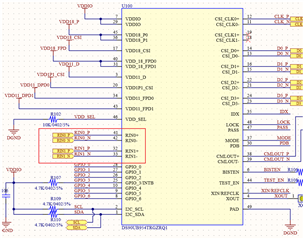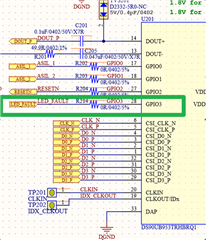Hi Team,
There have one thing need your support!
RIN0 & RIN1 are two sets of TX inputs. If the customer only uses RIN0, is it recommended to floating RIN1? If only RIN0 is used but not RIN1, can RIN1 be floating?
Because this 954 adapter board will be used in the customer’s camera module in the future, and the RX terminal will be illuminated when testing EMC, it is necessary to consider the lowest EMI,
, So I want to confirm with your suggestion? THX



